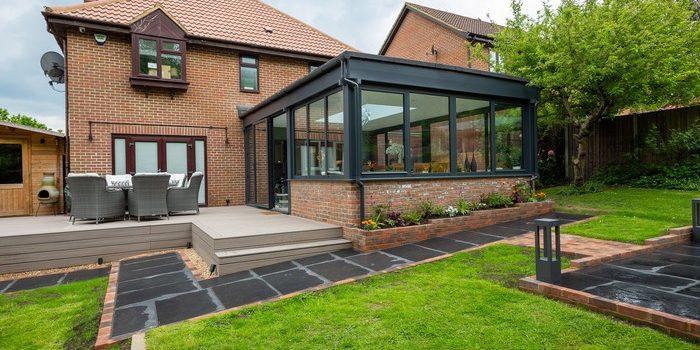Expanding your home is an effective way to add value to your property. It’s not something which springs to mind when we think about enlarged home improvements, but the option of sustainably sourced timber can be used to create an economically friendly frame for an annex, outhouse, new build, or home extension.
With building regulations and planning permission myths and rules looming over timber frame extensions, this topic can cause confusion. Luckily, we can provide the reliable information you need.
What is the difference between building regulations and planning permission?
It isn’t uncommon for the lines between building regulations and planning approval to be blurred amongst homeowners, but they are in fact two very different processes. So, what is the difference?
- Building regulations cover the structural aspects of building developments and are used to monitor progress throughout construction. They are set standards that ensure the health and safety of those within the building remains prominent and in line with the current standards of construction.
- Planning permission covers the policies that ensure developments remain in line with local and national regulations. It prevents construction from causing unacceptable harm or disruption to local sites, including neighbours’ amenities or nature reserves. When submitting a planning permission application, you are asking for professional approval to allow you to carry out your development.
Do I need building regulation approval for my timber frame extension?
The majority of property extensions will require building regulations approval, but if your planned floor space measures between 15 square meters and 30 square meters, you may find that you are exempt. However, even if your timber frame extension doesn’t require planning permission, it may well still need a request for building regulations.
How to obtain building regulation approval?
To obtain building regulations for your extension, you must submit detailed drawings of your plans to be signed off. An architect can complete these drawings for you. Site inspections will then be carried out at different stages of the build development, from foundations to completion. Your drawings will need to include detailed information on the following:
- The foundations of the build
- The flooring and walls, including the structure, insulation, and sound proofing
- The roof, including support beams, style, and headroom
- Drainage, including connection to existing drains and water supply
- Electrical connections
- Windows and doors, including ventilation options and disabled access
- Fire safety, including locations of fire alarms, and fire escapes from lower and upper floors
- Stairs and banisters
CONTACT A.G. KERR CARPENTRY
Do I need planning permission for a timber frame extension?
Not all timber frame extensions that require building regulation approval will need planning permission. If your planned extension meets the criteria of size and location, you may be exempt under Permitted Development Rights (PD). An architect or planning agent will be able to advise on your specific development plan.
If you have a question about our timber frame extensions or would like to find out more about our carpentry and construction services, get in touch. Give us a call on 01342 822 750 or email us at info@agkerrcarpentry.co.uk today.





